There are several places in the American Southwest where ancient peoples built homes and villages in a cliff. The best known (to Americans anyway) being what is now Mesa Verde National Park in the southwest corner of Colorado. Here is my Substack post of that place:
A Big, BIG Road Trip
In my previous post, here, I laid out the circumstances for this trip: going to California to work for Apple Computer. I had time to burn. I spent two nights at the Mesa Verde RV Park, which I highly recommend over anything in Durango, and spent a day in the Mesa Verde National Park.
There is another set of cliff dwellings, which is partly fake, at Manitou Springs, Colorado:
A Trip to The Springs
In Colorado, “The Springs” means the city of Colorado Springs. It’s an hour’s drive south of Denver, on the same side of the Rockies. There’s a huge military presence there with the Air Force Academy and the headquarters of NORAD, which used to be inside a hollowed-out mountain that not even Soviet nukes could break.
Both of the above were built in sandstone cliffs, using bricks made of adobe.
In the hills below Los Alamos, New Mexico is a town of cliff dwellings that are different: they were hollowed out from a cliff made of volcanic tuff.
I have spoken of tuff many times in past Substack posts. It is made of volcanic ash that, in most cases, was still partly molten when it settled to the ground - meaning that the particles of ash welded to each other as they settled.
It is strange stuff that erodes strangely, making the grotesque shapes of the peaks in Colorado’s San Juan Mountains, for instance, which are mentioned in this post:
The San Juans were formed well after the Rockies were, by a different process and made of different materials (volcanic lava, ash and tuff) than the Rockies; they are steep, rugged and young.
The tuff in this part of New Mexico came from the Valles Caldera, one of the world’s six supervolcanos whose crater is nearly 14 miles across, that erupted only 1.2 million years ago — which was the day before yesterday in geological time.
Here is an interesting post on Substack Notes about the Valles Caldera.
Now, one of the interesting properties of tuff is that it is full of holes:
FULL of holes! Geologists say that these were bubbles of gas that became trapped when the layer of hot, semi-molten ash was cooling and not yet fully formed.
The other distinguishing characteristic of tuff is that it isn’t very … tough. It erodes easily, and it’s easy to “work,” in the same sense as woodworking.
So, a small creek cut down through this layer of 1.2 million year old tuff, carving out a small canyon. And ancient people coming through this place found a canyon, made of cliffs with holes that are easily enlarged, with water in the bottom. A perfect place to build homes and plant crops. Which they did. They carved out homes in the cliffs -
and built pueblos down in the flat area made of bricks that were carved from tuff.
Here’s a closer look at the ruins of the pueblos:
Several of the cliff dwellings are open to the public for inspection and exploration.
It was definitely an interesting day.





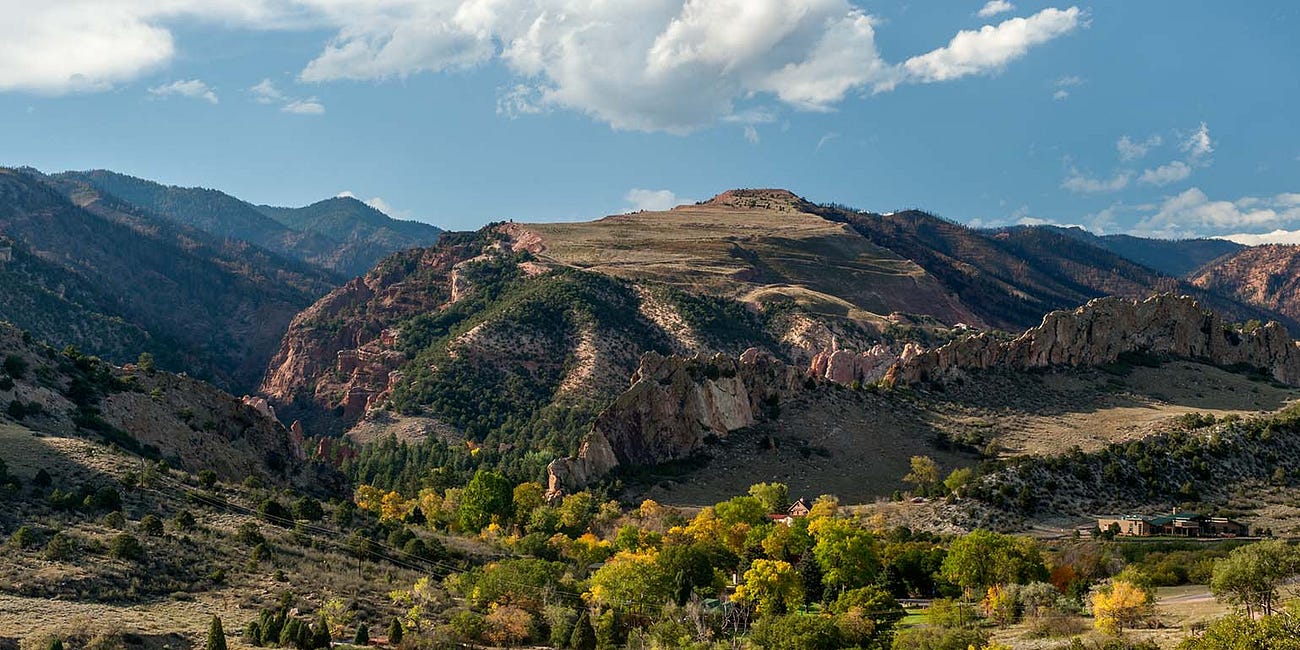
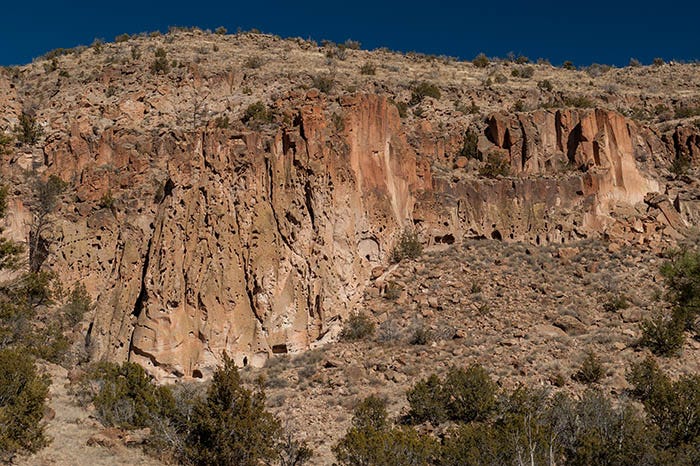
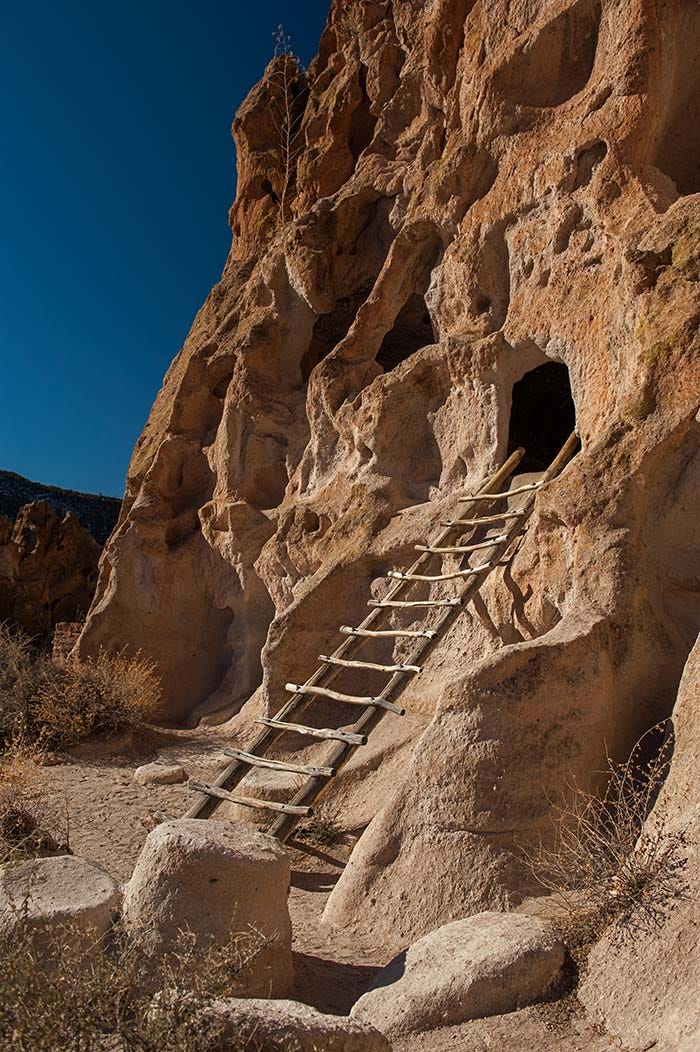
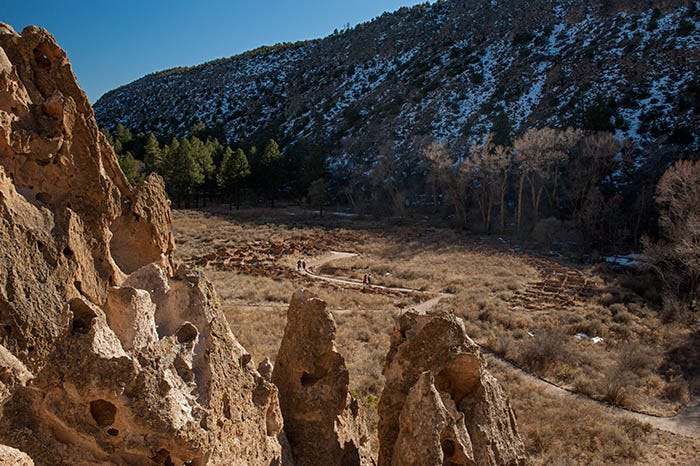
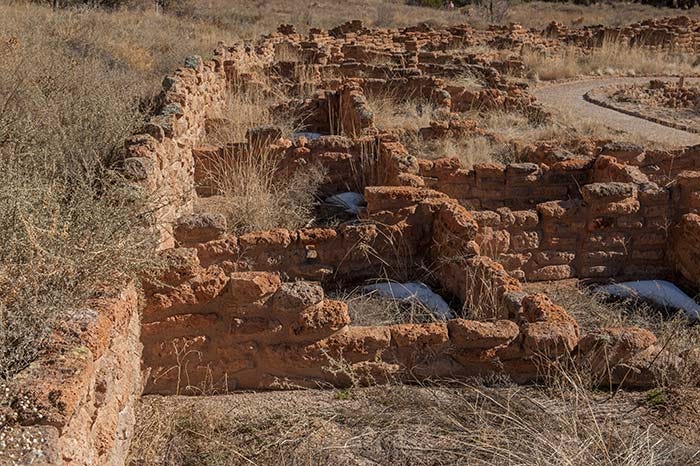
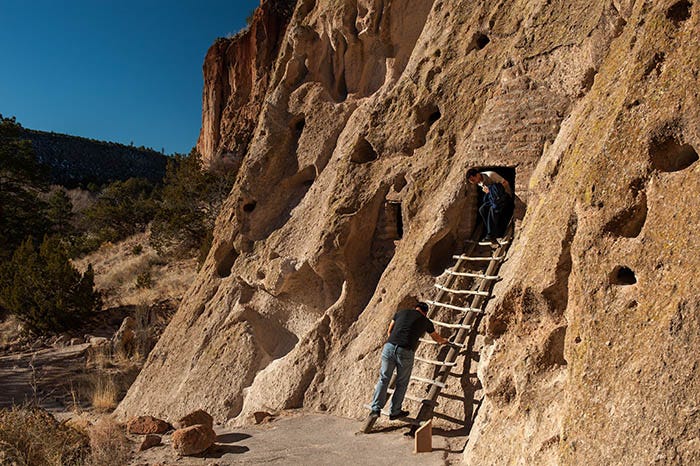
I'm glad that you mentioned the cliff dwellings in Manitou and how they aren't quite what they seem...